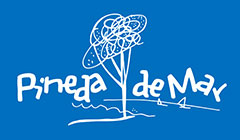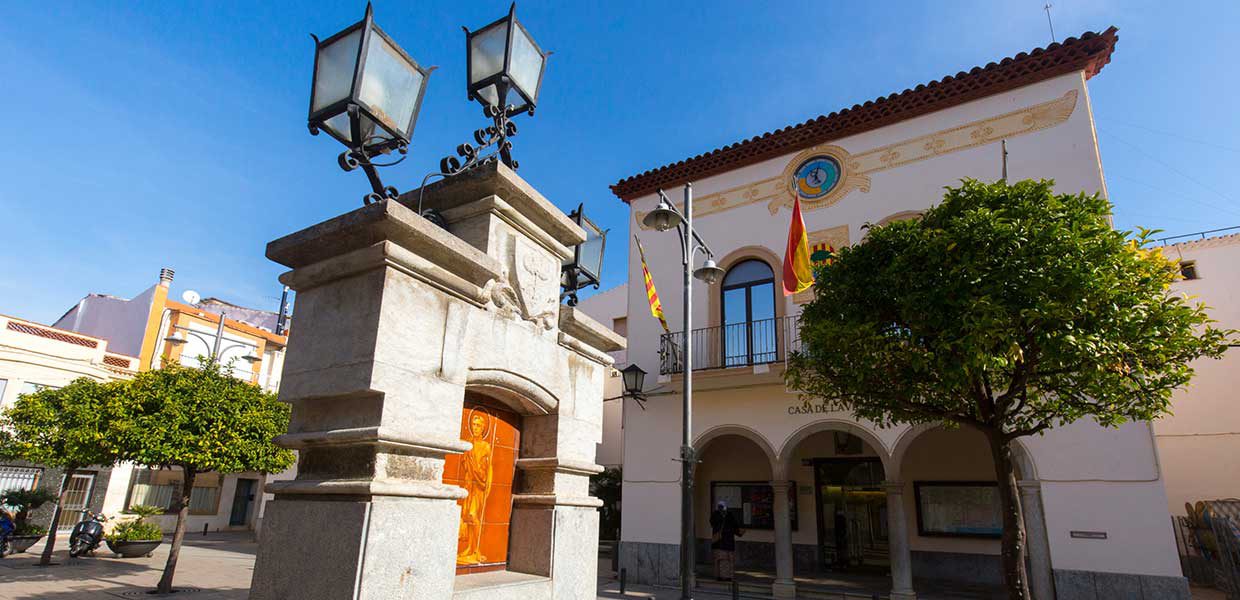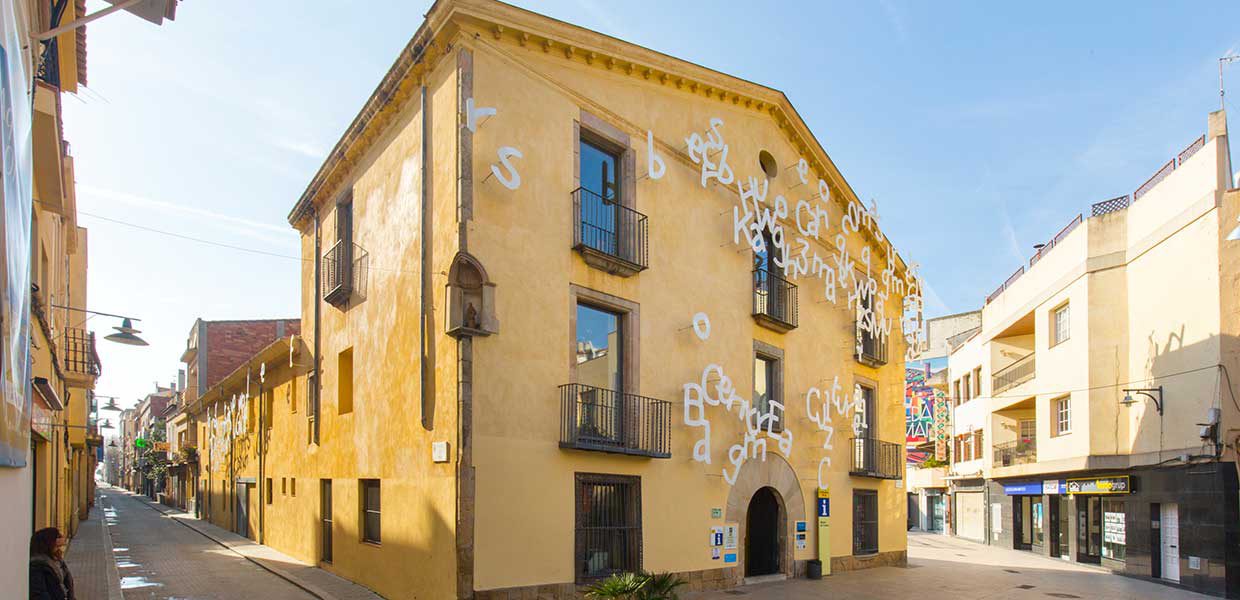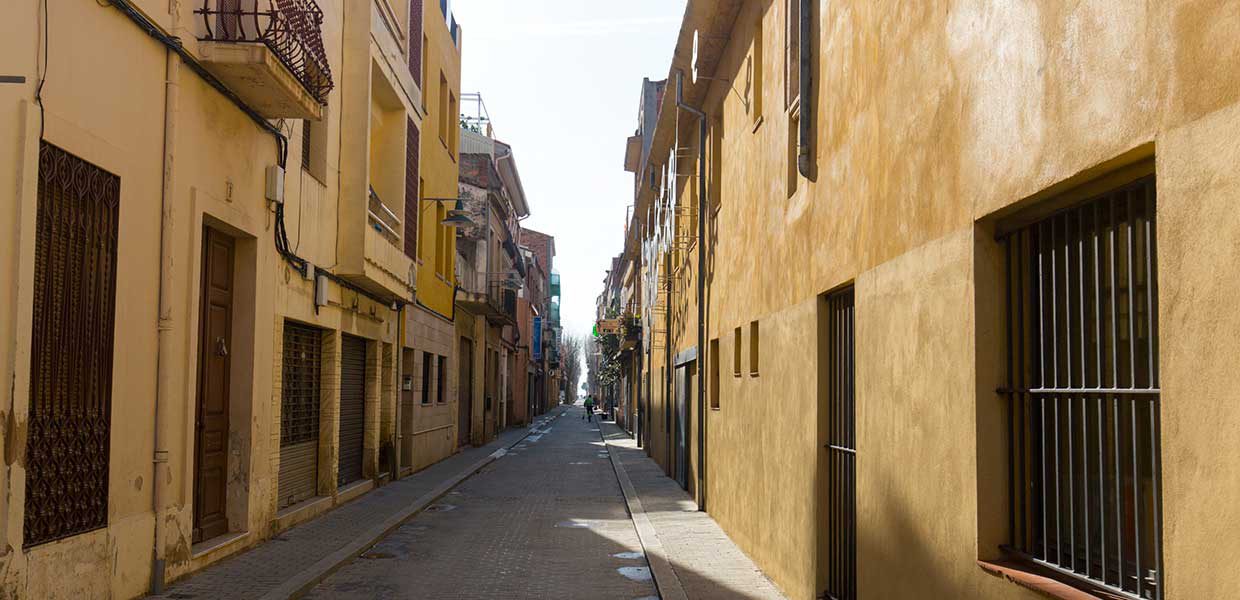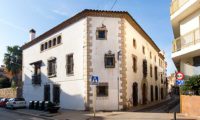Experiences
Route to the Centre of Pineda de Mar
Cultural
Route to the Centre of Pineda de Mar
This route is currently not guided, you can do it on your own following the map that you will find on the flyer.
FOR FURTHER INFORMATION CONTACT WITH US
Enjoy the "Route to the Centre of Pineda de Mar"

Santa Maria de Pineda
A 16th-century Baroque church. The previous
Romanesque building was consecrated in 1079 by
Berenguer Guifré, bishop of Girona, and was rebuilt
to make the present church. The church was fortified
following the attacks of Turkish pirates in 1545.
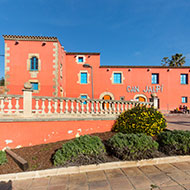
Cal Jalpí
Can Jalpí was the residence of the notaries of Montpalau, which for a long time was under the ownership of the Coll family.

House at 28 Ciutadans Street
A building formed by two connected houses which
preserves original elements such as the arched
door, the arched windows on the first and second
floors and a Gothic window on the first floor.
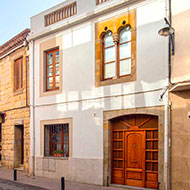
Ca l’Horta and Can Guinart
Located at 8 and 10 Ciutadans Street respectively,
these still display the twin Gothic windows. Also
worthy of mention are the arched side windows in Can
Guinart, and the original door in Ca l’Horta.

Ca l'Enric Benet
A terraced house from the 15th-16th century, with
an outstanding arched door, and a flamboyant Gothic
window that preserves a relief sculpture on the lintel.

Can Piaixa or Can Barbeta
A building from the 15th-16th century with flamboyant
Gothic windows on the first floor
and cherub sculptures.

Creu de Terme de Can Quintana
A stone cross monument that marked the parish’s
urban territorial boundaries. Built in Gothic style
in the 14th century, it stands in a private courtyard due
to urban growth following its installation. During
the Civil War the Quintana family hid it to prevent it
from being destroyed, and put it back in its place in
1948.

Serra and Moret Library
A building in ‘noucentist’ style built in 1922, with a
single floor. It was built under the mandate of Mayor
Manuel Serra i Moret as part of the project
to create public libraries in the Commonwealth of Catalonia.

Del Mar Street
A street opened in 1499 that connected the town of
Pineda with the beach to promote sea transport for
people and goods. Up until the 19th century only the two
ends of the street were urbanised and the centre was
left for crops. The bottom of the street, which was
the fishermen’s quarter, was known as Raval de Mar.

Fishermen’s Kitchen-Houses - Raval de Mar
Fishermen’s houses with the kitchen on the ground
floor, bedroom on the first floor, and two courtyards,
one behind the house and the other in front. This front courtyard
allowed the house to be extended to the street if there
was money to do so. This part of the Carrer de Mar,
known as Raval de Mar, was built up after the mid-18th
century when the pirates were no longer a danger for
the townspeople.

Cal Coronel
Fishermen’s houses with the kitchen on the ground
floor, bedroom on the first floor, and two courtyards,
one behind the house and the other in front. This front courtyard
allowed the house to be extended to the street if there
was money to do so. This part of the Carrer de Mar,
known as Raval de Mar, was built up after the mid-18th
century when the pirates were no longer a danger for
the townspeople.
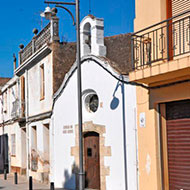
Chapel of Sant Antoni
A hermitage built in the 18th century to protect travellers
coming on the main road from Girona. Inside
there is a Baroque altar. The bell-gable stands out
along with the stained glass in the ox-eye window by the
artist Joan Vila Grau.

Pineda Town Hall - Plaça de Catalunya
A ‘noucentist’ building from 1917, and the work of Puig
Boada. It was built to replace the former 18th-century
town hall which was a place for the council, a
butcher’s, the prison and a hostel.

Can Comas
A 16th-century country house with a ground floor and
two floors above. This now houses the Fundació Tharrats
and is occupied by the Culture Area. The façade is
a visual poem installed by Mariscal in 2006.
